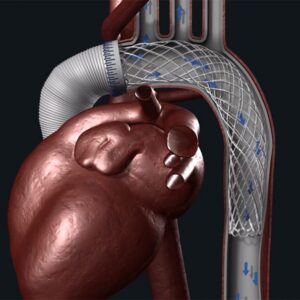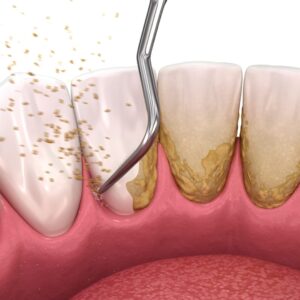Description
Familiarity with treatment
Breast lift, also known as mastopexy, is a surgical procedure that aims to lift and reshape sagging breasts. It is a popular cosmetic procedure for women who are unhappy with the position, shape, or firmness of their breasts. Here is some information about breast lift:
- Procedure: During a breast lift, excess skin is removed, and the breast tissue is reshaped to create a more lifted and youthful appearance. The nipple and areola may also be repositioned to a higher position on the breast. In some cases, breast implants may be used in conjunction with a breast lift to enhance volume and achieve the desired shape.
- Candidates: Breast lift surgery is suitable for women who have sagging breasts due to factors such as pregnancy, breastfeeding, weight loss, aging, or genetics. Candidates should be in good overall health, have realistic expectations, and understand the potential risks and benefits of the procedure.
- Benefits: Breast lift surgery can provide several benefits, including:
- Lifted and firmer breasts: The procedure can restore a more youthful and perky breast shape by lifting and tightening the breast tissue.
- Improved breast symmetry: Breast lift surgery can help improve breast symmetry by correcting any noticeable differences in size, shape, or position between the breasts.
- Enhanced self-confidence: Many women experience a boost in self-confidence and body image after breast lift surgery, as they feel more comfortable and satisfied with the appearance of their breasts.
- Incision types: The specific technique and incision pattern used during a breast lift will depend on the individual’s breast shape, degree of sagging, and desired outcome. Common incision types include:
- Anchor incision: This involves an incision around the areola, vertically down the breast, and horizontally along the breast crease. It is suitable for more extensive breast lifts.
- Lollipop incision: This involves an incision around the areola and vertically down the breast. It is suitable for moderate breast lifts.
- Donut incision: This involves a circular incision around the areola. It is suitable for mild breast lifts or cases where minimal scarring is desired.
- Recovery: After breast lift surgery, patients can expect some swelling, bruising, and discomfort. It is important to follow the surgeon’s postoperative instructions, including wearing a supportive bra, avoiding strenuous activities, and attending follow-up appointments. Most patients can return to work and normal activities within a few weeks, but it may take several months for the breasts to fully settle into their new position.
- Risks and complications: Like any surgical procedure, breast lift surgery carries potential risks and complications. These can include infection, bleeding, scarring, changes in nipple sensation, asymmetry, and poor wound healing. It is important to discuss these risks with a qualified plastic surgeon and make an informed decision.
Who is it suitable for?
Breast lift surgery, or mastopexy, is suitable for women who are experiencing sagging or drooping breasts and desire a more lifted and youthful breast appearance. It may be appropriate for individuals who meet the following criteria:
- Sagging breasts: Breast lift surgery is most suitable for women who have breasts that have lost their shape and firmness due to factors such as pregnancy, breastfeeding, weight loss, aging, or genetics. The procedure can help lift and reshape the breasts, restoring a more youthful contour.
- Good overall health: Candidates for breast lift surgery should be in good overall health. It is important to disclose any pre-existing medical conditions, previous surgeries, or medications to your plastic surgeon during the consultation.
- Stable weight: It is generally recommended that candidates for breast lift surgery have a stable weight. Significant weight fluctuations can affect the results of the procedure, so it is advisable to reach and maintain a stable weight before undergoing surgery.
- Realistic expectations: It is important for individuals considering breast lift surgery to have realistic expectations about the outcome. While the procedure can lift and reshape the breasts, it does not significantly change the size or volume of the breasts. It is important to have a thorough discussion with a plastic surgeon to understand the potential results and limitations of the procedure.
- Completed childbearing: Breast lift surgery can be performed on women who have completed their childbearing and do not plan to have more children. Pregnancy and breastfeeding can affect the shape and position of the breasts, so it is generally recommended to wait until after completing all desired pregnancies before considering breast lift surgery.
- Emotional readiness: Breast lift surgery is a significant decision that can have both physical and emotional impacts. It is important for individuals to be emotionally prepared for the procedure and have a clear understanding of their motivations and expectations.
Who is it not suitable for?
Breast lift surgery may not be suitable for everyone. Here are some factors that may make a person ineligible for the procedure:
- Pregnancy or plans for future pregnancies: Breast lift surgery is generally not recommended for women who are currently pregnant or planning to become pregnant in the near future. Pregnancy and breastfeeding can affect the shape and position of the breasts, potentially undoing the results of the surgery. It is advisable to wait until after completing all desired pregnancies before considering breast lift surgery.
- Unstable weight: Individuals who have not achieved a stable weight may not be suitable candidates for breast lift surgery. Significant weight fluctuations can affect the results of the procedure, so it is generally recommended to reach and maintain a stable weight before undergoing surgery.
- Poor overall health: Breast lift surgery is a surgical procedure that requires general anesthesia. Individuals with certain medical conditions, such as uncontrolled diabetes, heart disease, or compromised immune systems, may not be suitable candidates for surgery. It is important to disclose any pre-existing medical conditions to your plastic surgeon during the consultation.
- Unrealistic expectations: It is important for individuals considering breast lift surgery to have realistic expectations about the outcome. While the procedure can lift and reshape the breasts, it does not significantly change the size or volume of the breasts. It is important to have a thorough discussion with a plastic surgeon to understand the potential results and limitations of the procedure.
- Smoking: Smoking can impair the healing process and increase the risk of complications after surgery. Individuals who smoke may be advised to quit smoking before undergoing breast lift surgery.
- Limited breast tissue: In some cases, individuals with minimal breast tissue may not be suitable candidates for breast lift surgery. The procedure relies on existing breast tissue to reshape and lift the breasts. A plastic surgeon will evaluate the amount of breast tissue and determine if breast lift surgery is appropriate.
Advantages
Breast lift surgery, or mastopexy, offers several advantages for individuals who are unhappy with the position, shape, or firmness of their breasts. Some of the advantages of breast lift surgery include:
- Lifted and firmer breasts: The primary goal of breast lift surgery is to lift and reshape sagging breasts. The procedure removes excess skin and tightens the breast tissue, resulting in a more lifted and youthful breast appearance. This can help improve self-confidence and body image.
- Improved breast symmetry: Breast lift surgery can help improve breast symmetry by correcting any noticeable differences in size, shape, or position between the breasts. The surgeon can adjust the position of the nipple and areola to create a more balanced and symmetrical appearance.
- Enhanced breast contour: Breast lift surgery can improve the overall contour and shape of the breasts. The procedure can restore a more rounded and aesthetically pleasing breast shape, especially in cases where the breasts have become elongated or flattened due to sagging.
- Nipple and areola repositioning: During a breast lift, the surgeon can reposition the nipple and areola to a higher position on the breast mound. This can help create a more youthful and proportionate breast appearance.
- Improved clothing fit: Sagging breasts can make it challenging to find well-fitting clothing, especially bras and swimsuits. Breast lift surgery can help improve the fit of clothing and undergarments, allowing individuals to feel more comfortable and confident in their clothing choices.
- Boost in self-confidence: Many women experience a boost in self-confidence and body image after breast lift surgery. The procedure can help address concerns about sagging or drooping breasts, allowing individuals to feel more comfortable and satisfied with their breast appearance.
Complications
Like any surgical procedure, breast lift surgery carries potential risks and complications. While complications are rare, it is important to be aware of them. Some possible complications of breast lift surgery include:
- Infection: There is a risk of developing an infection at the incision site. This can usually be treated with antibiotics, but in some cases, additional surgical intervention may be required.
- Bleeding: Excessive bleeding during or after surgery is a potential complication. This can sometimes require a blood transfusion or additional surgical intervention to control the bleeding.
- Poor wound healing: Some individuals may experience delayed wound healing or wound separation. This can lead to scarring or the need for additional surgical procedures to correct the issue.
- Scarring: Breast lift surgery involves incisions, which will result in scars. While efforts are made to minimize scarring and place incisions in inconspicuous areas, the extent of scarring can vary depending on individual factors such as genetics and healing ability.
- Changes in nipple or breast sensation: Temporary or permanent changes in nipple or breast sensation may occur after breast lift surgery. This can include increased or decreased sensitivity or numbness in the nipple or breast area.
- Asymmetry: While efforts are made to achieve symmetry, there is a risk of uneven or asymmetrical results. This can include differences in breast shape, size, or nipple position.
- Fluid accumulation: Fluid accumulation, known as seroma, can occur after surgery. This may require drainage through a needle or additional surgical intervention.
- Blood clots: There is a risk of developing blood clots, known as deep vein thrombosis (DVT), after any surgical procedure. These clots can be potentially dangerous if they travel to the lungs (pulmonary embolism). Measures such as early ambulation and the use of compression stockings are taken to minimize this risk.
- Anesthesia risks: General anesthesia carries its own set of risks, including allergic reactions, respiratory problems, and adverse reactions to medications. These risks are generally low but can occur.
Preoperative care
Preoperative care refers to the preparation and steps taken before a surgical procedure to ensure the best possible outcome and minimize the risk of complications. Here are some general preoperative care guidelines that may be recommended:
- Medical evaluation: Before undergoing surgery, you will likely need to undergo a thorough medical evaluation. This may include a physical examination, blood tests, and other diagnostic tests to assess your overall health and identify any underlying medical conditions that may affect the surgery or anesthesia.
- Medication review: Inform your surgeon about any medications, supplements, or herbal remedies you are currently taking. Some medications, such as blood thinners or certain herbal supplements, may need to be temporarily discontinued before surgery to reduce the risk of excessive bleeding or interactions with anesthesia.
- Smoking cessation: If you are a smoker, your surgeon may advise you to quit smoking before surgery. Smoking can impair the healing process, increase the risk of complications, and negatively impact anesthesia. It is generally recommended to stop smoking for a certain period of time before and after surgery.
- Fasting: You will likely be instructed to fast for a certain period of time before surgery. This is to ensure that your stomach is empty and reduce the risk of complications during anesthesia. Your surgeon will provide specific instructions regarding when to stop eating and drinking before the procedure.
- Arrange transportation and support: Since you will be undergoing a surgical procedure, you will not be able to drive yourself home afterward. Arrange for someone to drive you to and from the surgical facility and have a support person available to assist you during the initial recovery period.
- Follow preoperative instructions: Your surgeon will provide you with specific preoperative instructions to follow. This may include guidelines on showering, skincare, and avoiding certain foods or beverages. It is important to carefully follow these instructions to ensure a smooth and successful surgery.
- Mental and emotional preparation: Surgery can be a significant event, and it is important to be mentally and emotionally prepared. Take the time to understand the procedure, discuss any concerns or questions with your surgeon, and ensure that you have realistic expectations about the outcome.
- Arrange for postoperative care: Depending on the type of surgery, you may need to arrange for postoperative care, such as assistance with daily activities, wound care, or follow-up appointments. Discuss these arrangements with your surgeon and ensure that you have a plan in place for your recovery period.
Postoperative care
Postoperative care refers to the steps and precautions taken after a surgical procedure to promote healing, minimize complications, and ensure a smooth recovery. Here are some general postoperative care guidelines that may be recommended:
- Follow surgeon’s instructions: It is crucial to carefully follow the postoperative instructions provided by your surgeon. These instructions may include guidelines on wound care, medication management, activity restrictions, and follow-up appointments. Adhering to these instructions will help optimize your recovery.
- Pain management: You may experience some discomfort or pain after surgery. Your surgeon will prescribe pain medications or recommend over-the-counter pain relievers to help manage any discomfort. Take the medications as directed and inform your surgeon if the pain is not adequately controlled.
- Wound care: Proper wound care is essential for healing and minimizing the risk of infection. Follow your surgeon’s instructions on how to clean and dress the incision site, including any specific products or techniques to use. Keep the incision area clean and dry, and avoid submerging it in water until cleared by your surgeon.
- Activity restrictions: Your surgeon will provide guidelines on activity restrictions and limitations during the initial recovery period. It is important to avoid strenuous activities, heavy lifting, and excessive bending or stretching that could strain the incision site. Gradually increase your activity level as advised by your surgeon.
- Supportive garments: Depending on the type of surgery, your surgeon may recommend wearing a supportive bra or compression garment to provide support and help reduce swelling. Follow your surgeon’s instructions regarding the use of these garments and the duration of wear.
- Nutrition and hydration: Eating a balanced diet and staying hydrated can support the healing process. Follow any dietary recommendations provided by your surgeon, and drink plenty of fluids unless otherwise instructed.
- Monitor for signs of complications: Keep an eye out for any signs of infection, such as increased redness, swelling, warmth, or drainage from the incision site. Also, watch for excessive bleeding, fever, severe pain, or any other unusual symptoms. If you notice any concerning signs or symptoms, contact your surgeon immediately.
- Emotional support: Surgery can be a physically and emotionally challenging experience. Seek emotional support from loved ones or consider joining support groups to help cope with any emotional or psychological aspects of the recovery process.
- Attend follow-up appointments: It is important to attend all scheduled follow-up appointments with your surgeon. These appointments allow your surgeon to monitor your healing progress, address any concerns or complications, and make any necessary adjustments to your postoperative care plan.







Reviews
There are no reviews yet.